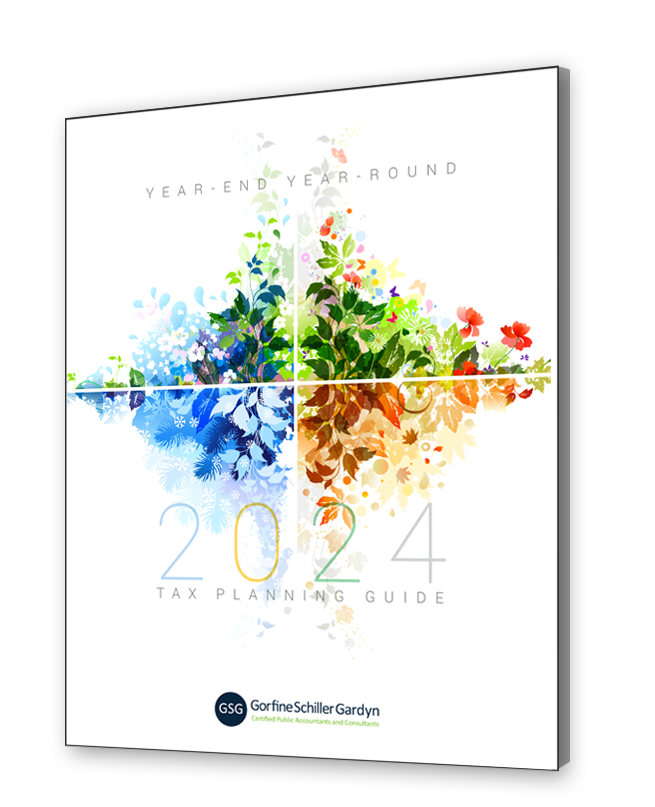Significant tax reform legislation was passed in December 2017. Colloquially known as The Tax Cuts and Jobs Act (TCJA), this legislation contained significant changes for exempt organizations.
The following blog post highlights five significant changes every not-for-profit organization needs to know from the TCJA.
1. New Tax Rates in Effect for Exempt Organizations
The TCJA changed the corporate tax rate to a flat 21% rate from graduated rates ranging between 15% and 35%. Trust tax rates also changed, with the top trust tax rate at 37% instead of 39.6% for taxable income over $12,500. Exempt organizations organized as corporations are taxed on unrelated business taxable income (UBTI) at corporate tax rates, while exempt organizations organized as trusts are taxed on UBTI at trust tax rates.
Therefore, exempt organizations with UBTI are directly impacted by the changes in corporate and trust tax rates. For fiscal year corporate filers, a blended rate will be used to compute tax owed for the fiscal year that straddles the end of 2017 and the start of 2018.
This blended rate will be computed as the sum of the following two calculations: a) Tax on the full fiscal year taxable income using the old graduated rate schedule and multiplying that computed tax by the portion of the fiscal year (as measured in days) before January 1, 2018 and b) Tax on the full fiscal year taxable income with the new 21% rate multiplied by the portion of the fiscal year after December 31, 2017.
As a result of the change in corporate tax rates from graduated rates to a single rate, exempt organizations organized as corporations with less than around $90,385 of UBTI will pay more tax as a result of the change in tax rates, while exempt organizations with UBTI of more than that will pay less tax.
2. UBTI Calculated Separately for Each Trade or Business
Effective for tax years beginning after December 31, 2017, exempt organizations that carry on more than one unrelated trade or business need to calculate UBTI separately for each trade or business. In effect, this requirement eliminates the ability to use losses from one trade or business (including losses carried forward from a tax year beginning on or after January 1, 2018) to offset income from another trade or business. Note that losses carried forward from tax years beginning before January 1, 2018 can be used to offset income from any unrelated trade or business.
Mechanically, UBTI for each trade or business, including an NOL deduction related to that trade or business, is accounted for separately, and all positive UBTI amounts are added together. The specific deduction of $1,000 can be used to offset the entity’s positive UBTI.
Although this new rule limits an exempt organization’s ability to utilize losses from its unrelated business activities that generate losses year after year, there is one small benefit to the new rule: The $1,000 specific deduction will be able to be used against positive UBTI even when there is a net loss from unrelated business activities in the aggregate. Note that there is currently no guidance defining what is a separate trade or business for this purpose. Until guidance specific to exempt organizations is promulgated, taxpayers may be able to use the guidance available regarding grouping activities in applying the passive loss rules.
3. Net Operating Loss (NOL) Rules
The TCJA also effected changes to the corporate NOL rules. Since the UBTI-NOL deduction for exempt organizations references the corporate NOL deduction, UBTI-NOL is impacted by the changes to the corporate NOL rules. For taxable years beginning on or after January 1, 2018, the NOL deduction is calculated as the lesser of carryovers for that trade or business or 80% of taxable income from that trade or business. Under new law, there is also no longer a carryback of NOL; instead, NOLs are carried forward indefinitely.
4. Expenses Associated with Qualified Transportation Fringe Benefits and Certain Other Benefits Added to UBTI
The TCJA reformed the deductibility of certain business expenses, including eliminating the qualified transportation fringe deduction and modifying the deductibility of entertainment expenses. Under prior tax law, qualified transportation fringe benefits provided to employees were both deductible to the employer and excludable from the employee’s income. However, amounts paid or incurred after December 31, 2017 associated with qualified transportation fringe benefits are no longer deductible.
Expenses in this category would include those related to the operation of a parking facility for employees or the provision of transit passes to employees. In addition, any expense incurred for providing transportation, or any payment or reimbursement, for commuting between the employee’s residence and place of employment, is not deductible.
Under prior tax law, with a few exceptions, entertainment, amusement, or recreation expenses (hereafter referred to as “entertainment expenses”) were nondeductible. One exception to the non-deductibility of entertainment expenses was that 50% of entertainment expenses were deductible if directly related to (or, in certain cases, associated with) the active conduct of the taxpayer’s trade or business.
The TCJA eliminated the “directly related to (or associated with) the active conduct of a trade or business” exception and renders all entertainment expenses nondeductible, unless another exception applies. Note that there was and still remains another exception for recreational, social, or similar activities primarily for the benefit of employees other than certain owners and highly compensated employees. This includes the costs of running an on-premises athletic facility, which are still deductible unless they are primarily for the benefit of certain owners and highly compensated employees.
To level the playing field between exempt and taxable entities, the TCJA includes a provision stating that UBTI of an exempt entity is increased by any expenses paid or incurred by the tax exempt organization for qualified transportation fringe benefits, a parking facility used in connection with qualified parking, or an on-premises athletic facility, to the extent such amounts are not deductible for taxable entities. This mandated inclusion applies for amounts paid or incurred after 2017. Note that the inclusion is not applicable to the extent the amounts paid or incurred are directly connected with an unrelated trade or business.
It is currently unclear whether transportation benefits included in an employee’s taxable wages need to be added to UBTI under this new rule or if the mandated inclusion for transportation benefits only applies to amounts excluded from an employee’s wages.
5. Excise Tax on Certain Executive Compensation
Under prior law, exempt organizations were generally not impacted by limitations on deductibility of compensation paid to company executives applicable to non-exempt entities. Under the TCJA, exempt organizations are now subject to an excise tax at the corporate tax rate on compensation paid to “covered employees” in excess of $1 million plus an excise tax on excess parachute payments. A “covered employee” is defined as one of the five highest compensated individuals for the taxable year or an employee who was a covered employee in any preceding tax year beginning after December 31, 2016. The excise tax applies for tax years beginning after 2017.
The TCJA is complicated and continues to raise questions for taxpayers. If you have any questions about the topics discussed in this blog post, please contact our tax professionals today.
Newsletter Sign Up
Tax Planning Guide
Recent Blog Posts









